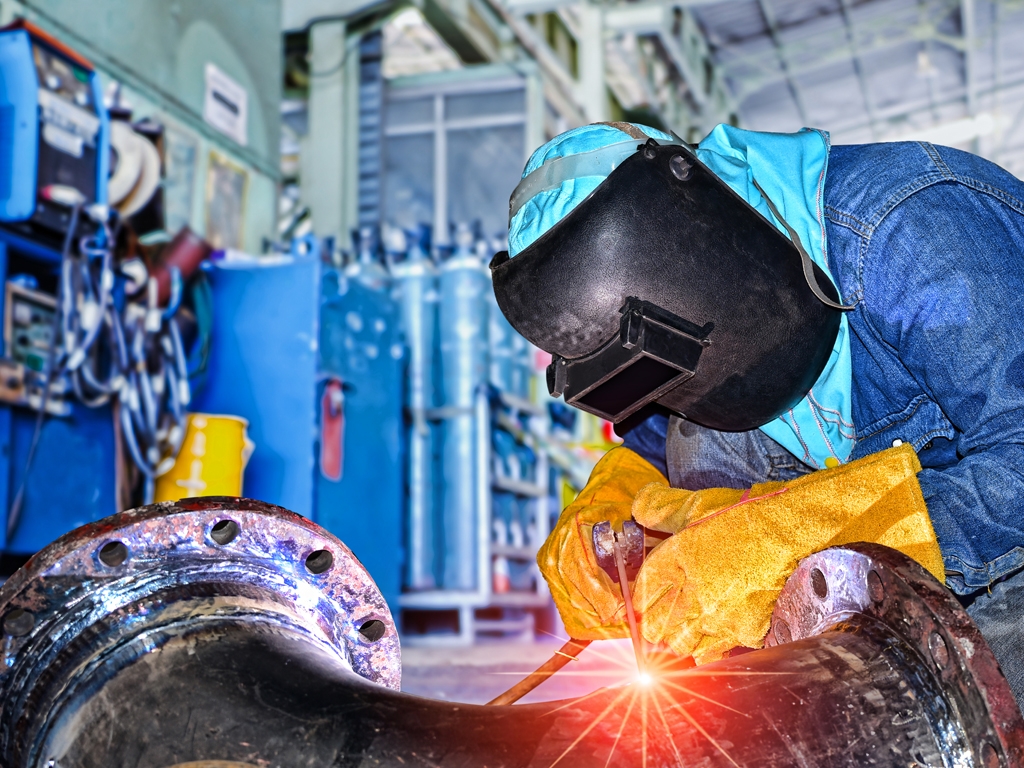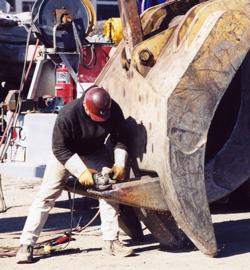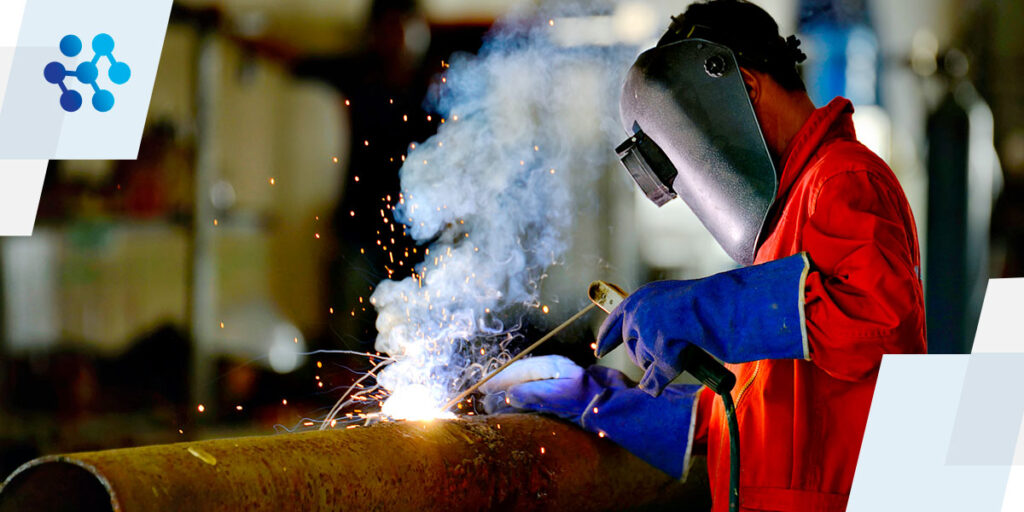Common Welding Repair Work Issues and How to Address Them Efficiently
Welding repairs typically run into a variety of problems that can endanger the integrity of the final product. Usual problems consist of inadequate penetration, porosity, and misalignment, among others. Each flaw presents unique difficulties that call for specific methods for resolution. Understanding these concerns is necessary for welders intending to boost their skills and end results. This discussion will explore these typical welding repair service issues and effective approaches to address them.
Poor Penetration
Poor infiltration takes place when the weld metal falls short to completely fuse with the base material, causing weak joints and prospective architectural failings. This issue frequently comes from not enough warmth input, inaccurate electrode angle, or improper welding speed. Welders may come across insufficient penetration because of a mistake of the necessary specifications for a particular product density or kind. Additionally, contamination on the base material's surface can prevent reliable bonding, worsening the problem. To attend to insufficient infiltration, welders should guarantee suitable settings on their tools and maintain a clean job surface area. Normal evaluation of welds is advised to determine any shortages early, enabling timely modifications and the prevention of endangered architectural honesty in welded settings up.
Porosity
Porosity is an usual issue in welded joints that manifests as little gas bubbles caught within the weld metal. This flaw can endanger the stability of the weld, bring about decreased strength and prospective failure under anxiety. Montana Mobile Welding and Repair Belgrade Welding. Porosity generally develops from contamination, wetness, or inappropriate welding strategies, which allow gases to leave into the molten weld pool. To deal with porosity, welders need to guarantee appropriate surface preparation, maintain a clean workplace, and utilize suitable welding criteria. Furthermore, choosing the right filler product and securing gas can reduce gas entrapment. Regular assessment and testing of welds can aid determine porosity early, guaranteeing timely rehabilitative actions are taken, therefore protecting the high quality and reliability of the bonded structure
Misalignment
Imbalance in welding can develop from numerous aspects, consisting of inappropriate configuration and thermal expansion. Understanding the origin creates is crucial for efficient resolution. A number of improvement strategies are readily available to straighten parts and ensure architectural integrity.
Root causes of Imbalance
Welding imbalance often stems from a selection of underlying concerns that can endanger architectural integrity. One key reason is incorrect fit-up of parts prior to welding, which can lead to voids and uneven surfaces. Variants in thermal expansion during the welding process can also result in distortion, particularly if the products being joined have different coefficients of growth. In addition, inadequate securing and fixturing might fail to hold components securely in area, causing activity throughout welding. Poorly maintained equipment, consisting of welding makers and devices, might present inconsistencies in the weld grain, additional adding to misalignment. Driver error, stemming from inadequate training or experience, can additionally play a considerable role in creating misaligned welds.

Adjustment Techniques Readily Available
Resolving misalignment successfully requires a combination of restorative techniques customized to the specific problems at hand. One common technique is making use of fixtures or jigs to hold components in the right setting during welding, making sure consistent positioning. Additionally, pre-heating the products can help in reducing distortion and boost fit-up. For substantial misalignment, mechanical realignment techniques, such as using hydraulic jacks or clamps, can be utilized to remedy the position before welding. Post-weld heat treatment may additionally be necessary to eliminate anxieties brought on by imbalance. Cautious examination and adjustment throughout the setup phase can prevent misalignment concerns from ending up being significant issues, advertising a smoother welding process and improving total architectural stability.
Distortion
Distortion is a typical challenge in welding that can arise from different aspects, including unequal cooling and heating. Recognizing the root causes of distortion is crucial for executing efficient avoidance techniques. Addressing this problem not just improves architectural integrity however additionally enhances the overall high quality of the weld.
Root causes of Distortion
When subjected to the intense warm of welding, materials often go through adjustments that can lead to distortion. This phenomenon largely develops from thermal development and tightening throughout the welding process. As the weld location warms up, the material expands; upon cooling, it contracts, which can create internal anxieties. Additionally, irregular heating throughout a workpiece can aggravate these tensions, leading to bending or bending. The kind of product also plays a significant duty; metals with differing thermal conductivity and coefficients of expansion might respond in a different way, bring about uncertain distortions. Inadequate joint layout and poor fixturing can add to imbalance during welding, increasing the likelihood of distortion. Recognizing these causes is crucial for reliable welding repair and avoidance approaches.
Avoidance Techniques
Effective avoidance strategies for distortion during welding concentrate on controlling heat input and guaranteeing correct joint layout. Keeping a regular warmth input assists to decrease thermal growth and contraction, which can result in distortion. Using methods such as preheating the workpiece can likewise minimize the temperature gradient, advertising uniform home heating. Furthermore, picking suitable joint styles, such as T-joints or lap joints, can enhance stability and lower anxiety concentrations. Implementing proper fixturing to secure the work surfaces in area additionally help in maintaining alignment during the welding process. Lastly, staggered welding sequences can distribute heat much more uniformly, protecting against local distortion. By applying these approaches, welders can significantly lower the possibility of distortion and improve the overall top quality of their welds.
Cracking
Breaking is a typical concern run into in welding repair work, typically resulting from various variables such as inappropriate cooling rates, material choice, or poor joint prep work. The occurrence of fractures can significantly endanger the honesty of the weld, causing prospective failings throughout procedure. To resolve this problem, welders must initially assess the origin creates, making sure that materials work and appropriately picked for the specific application. In addition, managing the cooling price throughout the welding procedure is essential; rapid cooling can generate tension and result in breaking. Proper joint layout and preparation also contribute to minimizing the risk. Executing these methods can enhance weld top quality and durability, ultimately lowering the probability of cracking in finished weldments.

Insufficient Fusion
A considerable problem in welding repairs is insufficient fusion, which happens when the weld steel does not appropriately bond with the base product or previous weld passes - Montana Mobile Welding and Repair Belgrade. This defect can aws d1 5 result in weaknesses in the joint, potentially endangering the integrity of the bonded structure. Variables adding to insufficient combination consist of inadequate heat input, incorrect welding method, and contamination of the surfaces being signed up with. To resolve this concern successfully, welders should guarantee correct pre-weld cleaning and surface area preparation, as well as readjust their welding parameters to attain sufficient penetration and combination. Regular assessment throughout the welding procedure can likewise help recognize insufficient fusion early, enabling prompt restorative procedures to boost the overall quality of the weld
Overheating
While welding repairs can boost structural stability, overheating provides a significant difficulty that can lead to material destruction. Extreme heat throughout welding can modify the mechanical buildings of steels, leading to lowered stamina, increased brittleness, and bending. This sensation is particularly vital in high-stress applications where architectural integrity is vital. Determining getting too hot can include visual inspections for discoloration or distortion, along with monitoring temperature level during the welding process. To mitigate the dangers associated with getting too hot, welders ought to use ideal methods, such as managing warm input, changing travel rate, and utilizing ideal filler products. Additionally, applying pre- and post-weld heat therapies can help bring back product buildings and boost the total high quality of the fixing, guaranteeing lasting performance and safety and security.
Frequently Asked Inquiries
What Are the Usual Indicators of a Welding Problem?

Exactly How Can I Check My Welds for Quality?
To check welds for quality, one can utilize visual examinations, ultrasonic testing, and radiographic methods. Each strategy guarantees structural honesty, determines flaws, and validates adherence to defined criteria, inevitably boosting the reliability of the welded joints.
What Security Precautions Should I Take While Welding?
When welding, one should prioritize safety and security by using appropriate individual protective devices, making certain appropriate air flow, securing combustible materials away, preserving brazing cast iron a clean work space, and recognizing environments to prevent injuries and crashes.
Can I Repair a Weld Without Redesigning the Entire Joint?
Fixing a weld without redesigning the entire joint is possible, depending on the damages (Montana Mobile Welding and Repair). Strategies such as grinding, including filler product, or utilizing a welding process can effectively address specific imperfections while preserving the bordering framework
What Tools Are Vital for Effective Welding Repairs?
Crucial tools for effective welding repairs include a welding maker, wire brush, grinder, protective equipment, clamps, and filler materials. Each device plays an important role in making sure quality check these guys out and security during the repair service process. Porosity generally develops from contamination, wetness, or inappropriate welding strategies, which permit gases to run away into the liquified weld pool. Poorly kept devices, including welding machines and tools, might introduce variances in the weld bead, further contributing to misalignment. When subjected to the extreme warmth of welding, products usually undertake adjustments that can lead to distortion. Fracturing is a typical problem come across in welding repairs, often resulting from various aspects such as inappropriate cooling rates, product selection, or inadequate joint prep work. A significant problem in welding repair work is incomplete blend, which occurs when the weld metal does not properly bond with the base material or previous weld passes.